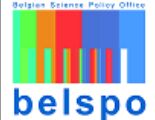EVA3M
Evapotranspiration: Monitoring at high resolution with MSG and moderate resolution satellites (EVA3M)
Context and objectives
The Royal Meteorological Institute (RMI) of Belgium, in the framework of EUMETSAT's “Land Surface Analysis-Satellite Application Facility” (LSA-SAF, http://landsaf.ipma.pt), has developed a model for the estimation of evapotranspiration (ET). In this model, ET is estimated from remote sensing (RS) data obtained from the Spinning Enhanced Visible and Infrared Imager (SEVIRI) onboard the Meteosat Second Generation (MSG) satellite as well as from numerical weather predictions and land cover information. The model is operational and delivers ET estimations over the whole field of view of the MSG satellite (Europe, Africa and Eastern South America) every 30 minutes. The spatial resolution of MSG is 3 x 3 km at sub-satellite point and about 4 x 5 km in continental Europe.
The temporal resolution of this product and its delivery at near-real time are unprecedented. Nevertheless, its spatial resolution may constrain its full exploitation for various applications; especially in regions like Europe with a high degree of landscape fragmentation. This study aimed at testing methodologies to combine RS imagery (geostationary and polar orbit satellites) for the estimation of ET such that the spatial resolution of the final product is improved while keeping the temporal signal from SEVIRI. In particular, the study consisted in the implementation and evaluation of two approaches for combining the operational ET estimations with RS data containing information over vegetation parameters and captured by polar orbit space borne sensors.
Methodology
Two methodological approaches were adopted. In the first approach (ab initio approach), moderate resolution RS data were incorporated in the input dataset for running the MSG-ET algorithm. In the second approach (a posteriori approach), ET was preliminarily estimated through an empirical statistical relation between ET and covariates retrieved from satellite data. This preliminary estimate was then compared and matched with the MSG-ET product. These approaches also differ in the way users may benefit from them. The former requires skills and access to data that may not be at the end user’s disposal while the latter is a process of low complexity and less data requirement. The study also included the MODIS ET product -MOD16- (~1 km spatial resolution).
The moderate resolution data source was imagery from the Vegetation sensor. The study was conducted in various locations across Europe where eddy covariance ET measurements were available for validation. The period of study was the vegetation growing season of 2007. The area studied at each location corresponds to a window of 5 x 5 MSG pixels around the location of the flux tower.
Results
This research verified that combining the MSG-ET and RS data from polar-orbit satellites can lead to estimates of ET at moderate spatial resolution. The validation exercises and the display of modelled spatial patterns of ET suggested that the ab initio approach is the most promising technique to gain spatial detail in the estimation of ET. The a posteriori approach showed great potentials especially in areas where soil moisture is not limiting the ET rate and LAI development is the main driver of ET. The results also showed the usefulness of combining MSG and SPOT-vegetation products to calculate net radiation, a covariate in the a posteriori approach.
The obtained results raised the need of more research on the role of LAI and soil moisture in the involved ET models. Additionally, as the spatial resolution of RS products increases, the feasibility of increasing the detail of the land cover information should be investigated.
The MOD16 product was not designed to supply daily ET data. In this respect, the product is not an alternative for the purposes of this study. Nevertheless, the product represents an interesting alternative as reference for further research and for applications focusing on the analysis of time frames of 8 days and more.
Execution
Period: May 1, 2013 – June 30, 2014
Funding source: Belgian Science Policy Office (Belspo) Stereo II Programme (contract SR/34/163).
References
Barrios, J.M.; Ghilain, N.; Arboleda, A.; Gellens-Meulenberghs, F., 2014: Combining
MSG/SEVIRI and SPOT/Vegetation for the computation of evapotranspiration at moderate resolution. International conference on Global Vegetation Monitoring and Modeling GV2M. Poster presentation. Session: Site measurements, scaling, modelling and remote sensing. Avignon, France. 3 - 7 February, 2014.
Barrios, J.M.; Ghilain, N.; Arboleda, A.; Gellens-Meulenberghs, F., 2014: Towards high temporal and moderate spatial resolution in the remote sensing retrieval of evapotranspiration by combining geostationary and polar orbit satellite data. European Geosciences Union General Assembly. Poster presentation. Session: Earth observation for monitoring and modeling the global energy, water and carbon cycles over land using model-data integration. Vienna, Austria. 27 April - 2 May, 2014.
Barrios, J.M.; Ghilain, N.; Arboleda, A.; Gellens-Meulenberghs, F., 2014: Combining MSG measurements and moderate resolution remote sensing for monitoring evapotranspiration. RMI conference annual cycle. Uccle, Belgium. 17 September, 2014.
Barrios, J.M.; Ghilain, N.; Arboleda, A.; Gellens-Meulenberghs, F., 2014: Retrieving evapotranspiration in forests by combining geostationary and polar orbit satellite data. ForestSAT2014 conference. Session: Investigating forest fluxes with moderate resolution imagery. Riva di Garda, Italy. 4 - 7 November, 2014.
Gellens-Meulenberghs, F., Ghilain, N., and Barrios, J. M., 2013: Monitoring Evapotranspiration at high resolution with MSG and Moderate resolution satellites (EVA-3M), Belgian Earth Observation days, 19-20 November 2013, Feluy, Belgium.

